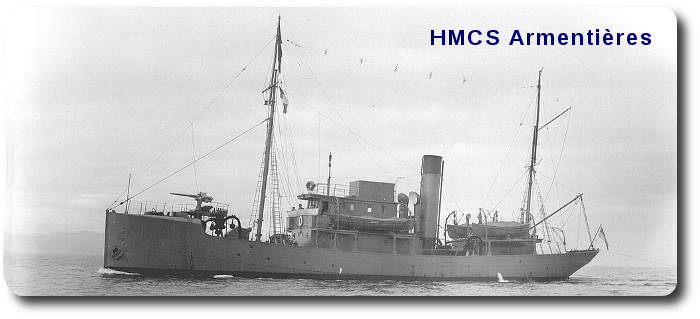Topic: RCN

Canadian Navy will Continue with Few Ships
No programme of Naval Construction Planned
Arms at Minimum
Dominion to Keep Land and Air Forces at Skeleton Strength
The Gazette, Montreal, Que., 2 January 1934
(By the Canadian Press)
Ottawa, January 1.—Canada contemplates no programme of naval construction for 1934, as so far as any Government policy concerns itself with matters of defence the Dominion will embark on no lines of expansion in any branch of the service it was learned here. The four destroyers and three minesweepers which constitute the Royal Canadian Navy will continue to do so; the skeleton strengths of the permanent force units will be so maintained, while whatever is done for the Royal Canadian Air Force will be in the way of replacement only.
Some years ago the naval branch of the Defence Department had under consideration the laying-up of the minesweepers and building some sloops of the Valerian class to take their place. The advent of the depression however, killed this project, and those 17-year-old drifters remained in commission.
Of the four drafted into service during the war and given names reminiscent of Canadian military achievement on the west front — "Ypres," "Festubert," "Thiepval," and "Armentieres" — three remain. Thiepval was lost in the Pacific seven years ago. Ypres has now become a "depot ship." Only Festubert and Armentieres continue active.
Two of Canada's destroyers, "Skeena" and "Saguenay," are at the top of their class as modern warships of that type. They are only three years old, as equipped with every modern device that makes for efficient vessels and are in every respect formidable men o'war. The others, "Champlain" and "Vancouver," are still technically on loan to this country from the Royal Navy, but the Admiralty said good-bye to them long ago and does not expect to get them back. They are 16 years old. Within the next three of four years plans will have to be drawn up for their replacement, and the likelihood is that this will be achieved by constructing two more destroyers of the Saguenay class.
Shortly after the war, the British Government presented Canada with a small flotilla comprising one light cruiser, "Aurora," and two destroyers, "Patriot" and "Patrician." The cruiser was laid up in 1922. The destroyers continued to serve until almost five years ago when they followed their parent ship to the scrap-heap.
Canadian naval policy envisages a fleet owned, controlled and manned by Canadians. The first two elements are accomplished facts, the last is being gradually achieved, for the vast majority of the personnel are now natives of this country and, for the first time since naval activities assumed any importance in the Dominion, the Director of Naval Operations—Captain Percy W. Nelles, R.C.N.—is a Canadian.
Naval policy, however, does not by any means contemplate a "big" navy. It conforms to the resolution of the 1923 Imperial Conference which set forth that "the primary responsibility of each portion of the Empire represented at the conference is for its own local defence." A writer in a recent issue of an English military journal crystallized this in the following terms:
"With respect to the role of Canada's sea forces, it must be understood that whereas the security of her sea-borne commerce is recognized as a national responsibility, there are certain considerations which must not be lost sight of. At the outmost limits of the sea-lines of communication in the Mediterranean, Indian Ocean, South America or Africa, etc., an individual Canadian cargo is perhaps hard to find; but at the focal point of the cone, in the vicinity of Canadian waters, these cargoes become, so to speak, congested, and operation against Canadian trade in these limited areas would have an adverse effect on Canadian industry.
"It must be remembered, however, that Canada is peculiarly well situated. Geographically and strategically, vis-à-vis trans-oceanic power. Our vulnerable focal point lies 5,000 miles on one side and 3,000 miles on the other from any possible overseas adversary. In any maritime conflict it is difficult to conceive of any major forces of possible enemies being detached to attack Canadian trade at these distances, at its most vulnerable point. It is, of course, possible that minor or improvised forces might well be available for such an objective if no defences were maintained to oppose them."
Reduced to its simplest terms, this means that Canadian naval policy is to guard the sea-lanes which fan out from the mouth of the St. Lawrence, from Halifax and Saint John on the Atlantic, and from Victoria and Vancouver on the Pacific. Beyond that, naval responsibility is regarded as resting elsewhere.
Whether Canada's present forces are adequate to deal with whatever situation may arise that would demand a practical application of this policy is the concern of the naval experts working in collaboration with the Treasury Department. Warships are expensive, and Canada's financial resources are employed to their limit in taking care of railway deficits, interest on war loans and the national debt, unemployment relief, unbalanced budgets and the administrative services. Having regard to the demands of the Treasury for the maintenance of those features of national existence that are urgent and immediately necessary, any possibility of naval expansion in the near future is so remote as to be ruled out of the picture.

